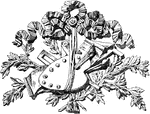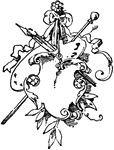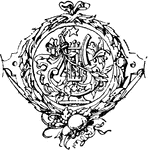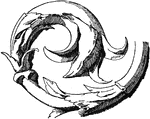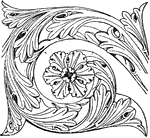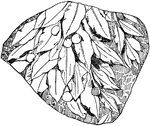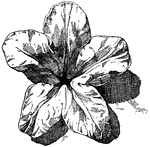
Quatrefoil Architecture
In architecture, an opening or a panel dividing by cusps or foliations into four leaves, or more correctly…

Modern Chair
The modern chair's top of the back is horizontal and is crowned with a cornice or an ornament.

Door-Panel Frame
The door-panel architectural frame was a square that is surrounded by an ornament that is symmetrical…

Egyptian Throne
The Egyptian throne had a lotus ornament with the arms formed by the wings of the sacred hawk.
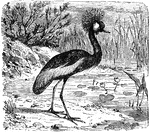
Crested Crane
"The Crested Crane has the top of its head adorned with a tuft of feathers, which it has the power of…
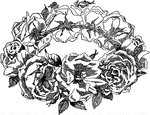
Wreath of roses
"Use the entire blossom mingled with buds and green leaves, all short stemmed, not longer than three…
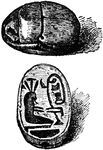
Scarab
The scarab is a carved piece of stone used as an amulet that represents a scarab beetle on one side…

Feverfew
Feverfew (Tanacetum parthenium; syn. Chrysanthemum parthenium) is a traditional medicinal herb which…

Leaf Finial
The finial is an architectural device, typically carved in stone and employed to decoratively emphasize…

Finials
The finial is an architectural device, typically carved in stone and employed to decoratively emphasize…
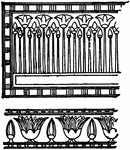
Egyptian Floral Ornament Form
Externally the temples presented only masses of unbroken wall; but these, as well as the pylons, were…
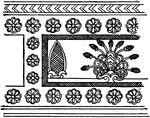
Assyrian Ornament
The purely conventional ornaments — the rosette, guilloche, and lotus-flower, and probably also…
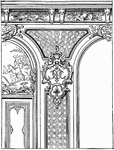
Regency Style
"Regency Style; motive from Hotel Soubise, Paris ... in the history of the fine arts in France,…
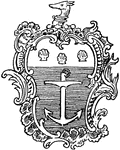
Rocaille Coquille
"Rocaille coquille, book-plate ornamentation in varying forms of the scallop-shell upon rockwork." -Whitney,…
Pillar at the Temple at Edfu
At the lower part of the capital there frequently occurs an ornament of diminishing triangles, resembling…
Pillar at the Palace at Luxor
At the lower part of the capital there frequently occurs an ornament of diminishing triangles, resembling…
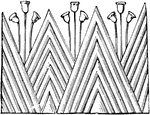
Capital Ornament in the Temple at Edfu
At the lower part of the capital there frequently occurs an ornament of diminishing triangles, resembling…

Ornament at the foot of the wall from the Great Temple at Philæ
They are generally of smaller dimensions in the interior, so that the walls or columns of the same chamber…

Guilloche Ornament Painted on Burnt Clay, from the Ruins of Nineveh
Guilloche, usually spelled without the acute accent on the final e, describes a repetitive architectural…
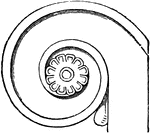
Volute of the Persian Column
Other capitals are more compact, where from the lower part, which is in the shape of a globular vessel,…
Scarab
"Scarab, a conventional beetle, which is a common motive in Egyptian art. The more oval form here seen…

Acanthus Leaf, Front and Side Views
The acanthus is one of the most common ornaments used to depict foliage.

Mutule, Side View
Rectangular block under the soffit of the cornice of the Greek Doric temple, which is studded with guttae.…

Mutule, Front View
Rectangular block under the soffit of the cornice of the Greek Doric temple, which is studded with guttae.…
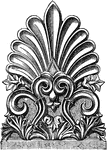
Ante-fixae
Ante-fixae, the vertical blocks which terminate the covering tiles of the roof of a Roman, Etruscan,…
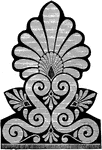
Ante-fixae
Ante-fixae (from Latin antefigere, to fasten before), the vertical blocks which terminate the covering…
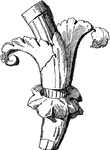
Roman Cup
The Roman Cup is an artificial foliage design that has serrated edges, made to look like natural desgins.
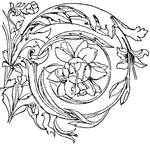
Roman Ornament
The Roman Ornament is a marble biga design that is from an imitation of an original in bronze.
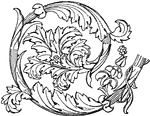
Roman Ornament
This Roman Ornament design comes from a "Florentine Pilaster". It is a richly decorated marble relief…

Renaissance Ornament
The Renaissance Ornament is a relief on the tomb of Hieronimo Basso, St. Maria del Popolo, Rome, by…

Laurel Ornament
The Laural is an Evergreen that blossoms a yellowish white and its fruit ball is egg shaped in a blue…

Olive Ornament
The Olive Ornament is an Evergreen that blossoms a small white oval fruit, greenish black.

Laurel Intarsia Panel Branch
The Laurel Intarsia Panel Branch is inlayed wood that was found in the Palazzo Ducal, Mantua, Italy.

Renaissance Ornament Vine
The Renaissance Ornament Vine was used as a design on an Italian pilaster.

Renaissance Ornament Vine
The Renaissance Ornament Vine is a frieze design found in Venice, Italy in the 16th century.

Bryony and Hops
The Bryony and Hops have picturesque qualities that well adapted for ornamental use.
